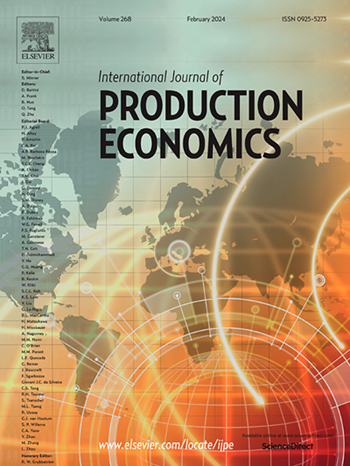消费者行为替代模型下减少产品退货的最优缺陷补贴政策分析
IF 9.8
1区 工程技术
Q1 ENGINEERING, INDUSTRIAL
引用次数: 0
摘要
在一家家电制造商管理有外观缺陷产品退货的挑战的激励下,我们研究了缺陷补贴政策的建立,作为鼓励消费者避免退货缺陷产品的策略。通过向消费者提供折扣,制造商可以通过避免更换费用来节省成本,包括与退货处理和运输相关的费用。据我们所知,本研究是第一个分析确定制造商在这种情况下应该提供的最佳贴现率的研究。我们探索了消费者对折扣反应的各种模型,并分析了它们对缺陷补贴政策的最优决策和财务结果的影响。我们的研究结果表明,过于简单的消费者行为模型可能会降低政策的有效性,低估政策的好处,从而潜在地阻止制造商采用此类政策。此外,我们还研究了在制造成本、剩余价值、处理和运输成本以及价格不同的产品类别中最优折扣政策的差异。我们的分析表明,重置成本与产品价格的比率在确定最优折扣方面起着至关重要的作用。我们还发现,产品价格对最优贴现率的影响更大,而重置成本的影响取决于价格水平:对于高价产品,重置成本对贴现率的影响可以忽略不计,而对于低价产品,重置成本对最优贴现率的影响可以忽略不计。此外,对于价格较低的产品,可以观察到改善的经济效益。我们的分析进一步表明,准确地模拟消费者行为和精确地确定最优贴现率对于最大限度地发挥缺陷补贴政策的好处是必不可少的。本文章由计算机程序翻译,如有差异,请以英文原文为准。

Analysis of optimal defective allowance policies for reducing product returns under alternative modeling of consumer behavior
Motivated by the challenges of managing returns of products with cosmetic defects at a home appliances manufacturer, we investigate the establishment of a defective allowance policy as a strategy to encourage consumers to avoid returning defective products. By offering a discount to consumers, the manufacturer can achieve cost savings by avoiding replacement expenses, including those related to returns handling and transportation. To our knowledge, this study is the first to analytically determine the optimal discount rate that a manufacturer should offer is such cases. We explore various models of consumer response to discounts and analyze their impact on both the optimal decisions and the financial outcomes of the defective allowance policy. Our findings indicate that simplistic consumer behavior models may reduce policy's effectiveness and underestimate its benefits, potentially deterring manufacturers from adopting such policies. Additionally, we examine differences in the optimal discount policy across product categories that differ in manufacturing cost, remaining value, handling and transportation costs, and price. Our analysis indicates that the ratio of replacement cost to product price plays a critical role in determining the optimal discount. Also, we find that product price exerts a greater influence on the optimal discount rate, whereas the impact of replacement costs depends on the price level: for high-priced products, these costs have negligible effect on the discount, whereas for low-priced products, these costs affect the optimal discount rate. Additionally, for lower-priced products, improved financial benefits are observed. Our analysis further suggests that accurately modeling consumer behavior and precisely determining the optimal discount rate are essential for maximizing the benefits of a defective allowance policy.
求助全文
通过发布文献求助,成功后即可免费获取论文全文。
去求助
来源期刊
CiteScore
21.40
自引率
7.50%
发文量
266
审稿时长
52 days
期刊介绍:
The International Journal of Production Economics focuses on the interface between engineering and management. It covers all aspects of manufacturing and process industries, as well as production in general. The journal is interdisciplinary, considering activities throughout the product life cycle and material flow cycle. It aims to disseminate knowledge for improving industrial practice and strengthening the theoretical base for decision making. The journal serves as a forum for exchanging ideas and presenting new developments in theory and application, combining academic standards with practical value for industrial applications.

 求助内容:
求助内容: 应助结果提醒方式:
应助结果提醒方式:


